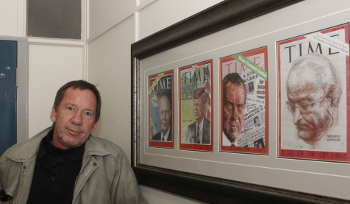Latest News Archive
Please select Category, Year, and then Month to display items
20 June 2023
|
Story Melissa Kilian
|
Photo Supplied
 Melissa Kilian is a Lecturer in the Department of Occupational Therapy.
Melissa Kilian is a Lecturer in the Department of Occupational Therapy.
The University of the Free State (UFS) is celebrating Youth Month by showcasing the positive influence of the institution on career development. As part of this initiative, we are sharing the stories of UFS alumni who are now working at the university.
Melissa Kilian, Lecturer in the Department of Occupational Therapy, shares her UFS journey:
Q: Year of graduation from the UFS:
A: 2011 and 2021.
Q: Qualification obtained from the UFS:
A: Baccalaureus and Master of Occupational Therapy.
Q: Date of joining the UFS as a staff member:
A: 1 June 2022 (employed for one year this month).
Q: Initial job title and current job title:
A: Lecturer in Occupational Therapy.
Q: How did the UFS prepare you for the professional world?
A: The UFS provided me with excellent clinical exposure to the diverse profession of occupational therapy. Additionally, the occupational therapy undergraduate course provided many opportunities for promoting self-awareness and self-development and entering the workforce as a graduate willing to explore the dimensions of the profession and what my unique contribution can be.
Q: What are your thoughts on transitioning from a UFS alumnus to a staff member?
A: Since being employed with the UFS, I have a deeper acknowledgement and appreciation for lecturers, as well as a multi-layered understanding of the importance of curriculum development and how this translates into students becoming competent graduates.
Q: Any additional comments about your experience?
A: It’s been quite an experience ...!
Photo manipulation in journalism: evil, crutch or lifebuoy?
2017-09-04

Albe Grobbelaar, veteran journalist and lecturer in the
Department of Communication Science at the UFS.
Photo: Rulanzen Martin
Since the 1800s the manipulation of photographs has been common practice, and who can forget the OJ Simpson Time magazine cover in 1994? Albe Grobbelaar, lecturer in the Department of Communication Science at the University of the Free State (UFS), asked in a special lecture on 18 August 2017 whether “Photo manipulation in Journalism” was an evil habit, a crutch or a lifebuoy.
“As a journalist I have always been interested in photography. And the principle of photo manipulation or tampering with photos, as we call it, is something that has interested me ever since,” Grobbelaar said. Photo manipulation is an area that has garnered many academic interest and is not a new trend but a practice that started in the 1830s when photos came into popular use. “It is not always done with ulterior motives, artists played with photographs to get unique effects.” Photo manipulation is not only to create fake news, but is sometimes used to convey novelty and create shock to news readers.
Different viewpoints for different circumstances
He talked about the spectrum of viewpoints on photo manipulation. Some conservative journalism schools say photos should never be retouched while other feel it is fine to tamper with pictures. “What I tried to convey in the lecture was that one should consider different circumstances differently,” Grobbelaar said. As a journalist he believes that news photos should never be manipulated.
He mentioned the example of the mugshot of OJ Simpson that the Los Angeles Police Department released to the media. “Newsweek and Time both used the photo on their front pages, but Time deliberately darkened the picture so that OJ, a black man, would appear more sinister,” Grobbelaar said. It is, however, common practice in the fashion industry to retouch images that are used in fashion magazines.
Use own judgment to validate photos
In the age of social media it has become easy to manipulate photos and which has been labelled fake news. “I would advise people to use their own judgment when validating the authenticity of photos,” Grobbelaar said. It is important to verify whether they are from a reliable news outlet.